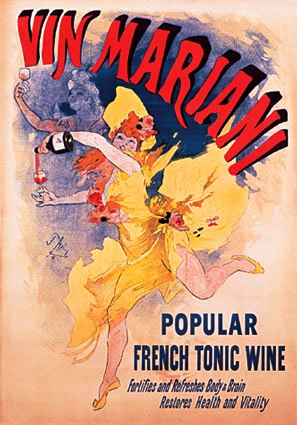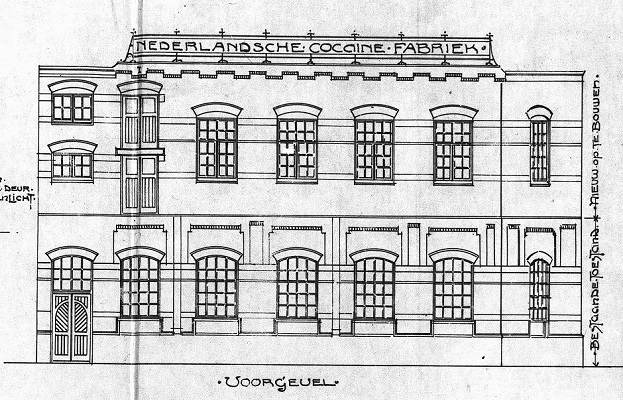- Joined
- Feb 14, 2023
- Messages
- 94
- Reaction score
- 43
- Points
- 28
yeah a topic where they trie hard to find info about... an offiucial share (stock cert.) you could invest in..

 en.wikipedia.org
en.wikipedia.org

 www.vice.com
www.vice.com

 filmfreeway.com
filmfreeway.com
The drug and country have a history together that goes way back as well. Here’s what you need to know about coke and Holland.
It is the root of all evil. Okay, maybe not the root of all evil but it is the root of many murders, terrible wars, dangerous drug gangs and mass corruption. When coca-cola was first invented, it was added as an ingredient and its use is so ubiquitous these days that traces of it can be found in Amsterdam tap water. It also comes from a plant and is not, contrary to popular belief, synthetically produced. Have you cracked what we are talking about from our clues? No? Well, it’s cocaine!
In the Netherlands recently, there has been a lot of talk about cocaine- in part due to raging gang wars in the major cities, and in part due to its growing social acceptability (at least among certain classes). Cocaine, along with other non-medicinal drugs- is illegal in the Netherlands. This has been the case since 1912 when the Opium Law was passed. However, because the Dutch government views the idea of a drug-free country as unrealistic, the use of most drugs in the Netherlands is tolerated- which is where the country’s reputation as a drug-tolerant country comes from.
At first glance, you would think the pure white, powdery substance would be synthetic. But cocaine actually comes from the South American Coca plant, predominantly located in Peru and Bolivia.
The first stage in the making of cocaine is to strip the leaves from the stem and saturate them in a toxic mix of chemicals. The chemicals, including bleach and kerosene, extract the cocaine from the leaves. These chemicals cause great destruction as they are poured into the surrounding ground which run into the nearby rivers.
Once the chemicals and leaves have amalgamated, the brew is then drained and the residue is heated which forms a discoloured paste.
The final stage of cocaine production is for the paste to be sent to a lab where it is whitened and made into rocks and powder.
History of cocaine: from South America to the most seized drug in the Netherlands
Certain populations of South Americans have been chewing on the leaves of the coca plant for over 4,000 years. This ‘snack’ reduced tiredness and boosted energy levels required for the hard labour in the mountainous terrain.
When the Spanish invaded Peru in 1532 they took control of the coca leaves and would regulate their distribution to labourers. They began taxing the leaves and tried to export them to Europe but the leaves did not travel well.
As technology advanced and knowledge of the plant became more refined, cocaine was transported to Europe in a drink called ‘Cocawine’.
This wine was created by a French chemist named Angelo Mariani who mixed the coca leaves with alcohol to create a potent wine. Advertisements for this wine included “fortifies and refreshes body and brain and restores health and vitality”.
History of cocaine: from South America to the most seized drug in the Netherlands
Certain populations of South Americans have been chewing on the leaves of the coca plant for over 4,000 years. This ‘snack’ reduced tiredness and boosted energy levels required for the hard labour in the mountainous terrain.
When the Spanish invaded Peru in 1532 they took control of the coca leaves and would regulate their distribution to labourers. They began taxing the leaves and tried to export them to Europe but the leaves did not travel well.
As technology advanced and knowledge of the plant became more refined, cocaine was transported to Europe in a drink called ‘Cocawine’.
This wine was created by a French chemist named Angelo Mariani who mixed the coca leaves with alcohol to create a potent wine. Advertisements for this wine included “fortifies and refreshes body and brain and restores health and vitality”.

Coca-cola was originally only distributed in soda fountains, meaning only the elites in society could afford the beverage. In time, coca-cola bottles were invented which gave the rest of society access to the soda. A drink that originally showed status slowly became “corrupted” by the minorities. Grace Elizabeth Hale in The New York Times explains “southern newspapers reported that “negro cocaine fiends” were raping white women, the police powerless to stop them. By 1903, Candler [manager of coca-cola] had bowed to white fears [by] removing the cocaine and adding more sugar and caffeine.”
Writers and artists such as Henrik Ibsen and Robert Louis Stevenson came to love the drug. The Independent found that Sigmund Freud wrote a paper entitled “über cola” and said the drug brought “exhilaration and lasting euphoria, which in no way differs from the normal euphoria of the healthy person”.
It is now one of the most consumed drugs in the world. The European Monitoring Centre for Drugs and Drug Addiction 2019 Netherlands drug report showed that cocaine is the most seized drug in the Netherlands, followed by cannabis and then MDMA.

The Netherlands has made a huge amount of money from selling drugs and was once one of the biggest manufacturers in the world.
The Dutch cocaine factory was located in Amsterdam on Weespertrekvaart. Conny Braam wrote a book about the Dutch cocaine factory and spoke to Vice about her findings. She pointed out how during her research it became apparent that cocaine sales from the Netherlands soared during World War I. Why? Because cocaine was given to soldiers to increase their productivity in the war zone. It suppressed appetite, reduced fear and heightened alertness which made it very effective for tired and hungry soldiers in battle.
The Dutch sold cocaine to so many people which perhaps held them in good stead to become the most competitive economy in Europe…
In 1919 the Dutch Opium Law came into force making cocaine a controlled substance and exports bans were put in place. So what happens to the thousands of vulnerable soldiers who are heavily reliant on the drug? A black market emerged (which is still in use today).The human cost of cocaine production
Nearly 75 million euros worth of cocaine is bought in Amsterdam annually and an investigation conducted over six months showed that 30% of people have used the drug.
The production of cocaine is illegal so there is no law which can protect the cocaine producers or drug traffickers. Many people are coerced into drug trafficking, and cocaine producers in South America make very little money and work in harsh conditions.
The street value of a gram of cocaine ranges between 25 and 50 euros but the South American cocaine labourers receive about 50c for a days work.
What are you actually putting up your nose?
Pure cocaine is almost impossible to source these days. So if you buy it, you’ll be ingesting other nasty chemicals that are used to bulk out the drug. Drug dealers do this to make a bigger profit.
ruth is unless you get every cocaine batch you order tested, you can’t truly know. There’s no obvious signifier just by looking at it as drug dealers use substances with the same texture and colour.
Sometimes batches of cocaine are mixed with innocent ingredients such as caffeine but most of the time it is dangerous substances like the following:
Lidocaine is also common and mimics the numbing of the mouth and gums people associate taking cocaine with. In a study of drugs, lidocaine was discovered in over 66 per cent of the cocaine batches seized for testing.
If you’re interested to know more, Doing Drugs for Fun is a recently aired three-part documentary which follows four British cocaine users as they explore behind the scenes of cocaine production. A major focus on the docu-series is testing the cocaine and seeing what the drug is really mixed with.
Through dealers. If you texted a dealer and ordered a pizza at the same time, the cocaine would almost be guaranteed to arrive faster.
Some people purchase their drugs through the Dark Web and have them posted to their mailbox. Pretty silly though, right? You have no idea what you are ordering and if you will be caught.
Other general colloquialisms include coke, coca, snow, blow, charlie sheen, nose whiskey, powder
▼ Ad by Refinery89
Being educated about drugs is our responsibility. We must choose wisely, make informed decisions and try to mitigate the risks if we choose to take recreational drugs. It’s also good to bear in mind that sometimes you’ll get darn right ripped off and dealers will sell you baking soda as “cocaine”.

Nederlandsche Cocaïnefabriek - Wikipedia

An Amsterdam Coke Dealer Explains the Economics of Addiction
"I stop tourists from only using drugs on their holiday by selling them fake shit."

Dutch Cocaine Factory
Dutch Cocaine Factory focuses on sixty-year-old Arend who is addicted to cocaine and whose intensified consciousness seems to show obvious signs of paranoia....
 filmfreeway.com
filmfreeway.com
The drug and country have a history together that goes way back as well. Here’s what you need to know about coke and Holland.
It is the root of all evil. Okay, maybe not the root of all evil but it is the root of many murders, terrible wars, dangerous drug gangs and mass corruption. When coca-cola was first invented, it was added as an ingredient and its use is so ubiquitous these days that traces of it can be found in Amsterdam tap water. It also comes from a plant and is not, contrary to popular belief, synthetically produced. Have you cracked what we are talking about from our clues? No? Well, it’s cocaine!
In the Netherlands recently, there has been a lot of talk about cocaine- in part due to raging gang wars in the major cities, and in part due to its growing social acceptability (at least among certain classes). Cocaine, along with other non-medicinal drugs- is illegal in the Netherlands. This has been the case since 1912 when the Opium Law was passed. However, because the Dutch government views the idea of a drug-free country as unrealistic, the use of most drugs in the Netherlands is tolerated- which is where the country’s reputation as a drug-tolerant country comes from.
Before it gets to the Netherlands, where does cocaine come from?
At first glance, you would think the pure white, powdery substance would be synthetic. But cocaine actually comes from the South American Coca plant, predominantly located in Peru and Bolivia.
The first stage in the making of cocaine is to strip the leaves from the stem and saturate them in a toxic mix of chemicals. The chemicals, including bleach and kerosene, extract the cocaine from the leaves. These chemicals cause great destruction as they are poured into the surrounding ground which run into the nearby rivers.
Once the chemicals and leaves have amalgamated, the brew is then drained and the residue is heated which forms a discoloured paste.
The final stage of cocaine production is for the paste to be sent to a lab where it is whitened and made into rocks and powder.
History of cocaine: from South America to the most seized drug in the Netherlands
Certain populations of South Americans have been chewing on the leaves of the coca plant for over 4,000 years. This ‘snack’ reduced tiredness and boosted energy levels required for the hard labour in the mountainous terrain.
Spanish invasion
When the Spanish invaded Peru in 1532 they took control of the coca leaves and would regulate their distribution to labourers. They began taxing the leaves and tried to export them to Europe but the leaves did not travel well.
Invention of cocawine
As technology advanced and knowledge of the plant became more refined, cocaine was transported to Europe in a drink called ‘Cocawine’.
This wine was created by a French chemist named Angelo Mariani who mixed the coca leaves with alcohol to create a potent wine. Advertisements for this wine included “fortifies and refreshes body and brain and restores health and vitality”.
History of cocaine: from South America to the most seized drug in the Netherlands
Certain populations of South Americans have been chewing on the leaves of the coca plant for over 4,000 years. This ‘snack’ reduced tiredness and boosted energy levels required for the hard labour in the mountainous terrain.
Spanish invasion
When the Spanish invaded Peru in 1532 they took control of the coca leaves and would regulate their distribution to labourers. They began taxing the leaves and tried to export them to Europe but the leaves did not travel well.
Invention of cocawine
As technology advanced and knowledge of the plant became more refined, cocaine was transported to Europe in a drink called ‘Cocawine’.
This wine was created by a French chemist named Angelo Mariani who mixed the coca leaves with alcohol to create a potent wine. Advertisements for this wine included “fortifies and refreshes body and brain and restores health and vitality”.

Coca-cola
Cocawine is said to be a predecessor of cocaine in coca-cola, invented in 1886. Recognise the “coca” part? Well, now you know where it comes from! – the coca plant of course. About one line of cocaine was added to every bottle of coca-cola.Coca-cola was originally only distributed in soda fountains, meaning only the elites in society could afford the beverage. In time, coca-cola bottles were invented which gave the rest of society access to the soda. A drink that originally showed status slowly became “corrupted” by the minorities. Grace Elizabeth Hale in The New York Times explains “southern newspapers reported that “negro cocaine fiends” were raping white women, the police powerless to stop them. By 1903, Candler [manager of coca-cola] had bowed to white fears [by] removing the cocaine and adding more sugar and caffeine.”
Widespread use
Writers and artists such as Henrik Ibsen and Robert Louis Stevenson came to love the drug. The Independent found that Sigmund Freud wrote a paper entitled “über cola” and said the drug brought “exhilaration and lasting euphoria, which in no way differs from the normal euphoria of the healthy person”.
It is now one of the most consumed drugs in the world. The European Monitoring Centre for Drugs and Drug Addiction 2019 Netherlands drug report showed that cocaine is the most seized drug in the Netherlands, followed by cannabis and then MDMA.
The Netherlands was once the biggest cocaine manufacturer in the world

The Netherlands has made a huge amount of money from selling drugs and was once one of the biggest manufacturers in the world.
The Dutch cocaine factory supplied soldiers drugs during the war
The Dutch cocaine factory was located in Amsterdam on Weespertrekvaart. Conny Braam wrote a book about the Dutch cocaine factory and spoke to Vice about her findings. She pointed out how during her research it became apparent that cocaine sales from the Netherlands soared during World War I. Why? Because cocaine was given to soldiers to increase their productivity in the war zone. It suppressed appetite, reduced fear and heightened alertness which made it very effective for tired and hungry soldiers in battle.
Is that how the Netherlands became such a wealthy economy?
The Dutch sold cocaine to so many people which perhaps held them in good stead to become the most competitive economy in Europe…
But after the war ended, what happened to the soldiers addicted to cocaine?
In 1919 the Dutch Opium Law came into force making cocaine a controlled substance and exports bans were put in place. So what happens to the thousands of vulnerable soldiers who are heavily reliant on the drug? A black market emerged (which is still in use today).The human cost of cocaine production
Nearly 75 million euros worth of cocaine is bought in Amsterdam annually and an investigation conducted over six months showed that 30% of people have used the drug.
The production of cocaine is illegal so there is no law which can protect the cocaine producers or drug traffickers. Many people are coerced into drug trafficking, and cocaine producers in South America make very little money and work in harsh conditions.
The street value of a gram of cocaine ranges between 25 and 50 euros but the South American cocaine labourers receive about 50c for a days work.
What are you actually putting up your nose?
Pure cocaine is almost impossible to source these days. So if you buy it, you’ll be ingesting other nasty chemicals that are used to bulk out the drug. Drug dealers do this to make a bigger profit.
ruth is unless you get every cocaine batch you order tested, you can’t truly know. There’s no obvious signifier just by looking at it as drug dealers use substances with the same texture and colour.
Sometimes batches of cocaine are mixed with innocent ingredients such as caffeine but most of the time it is dangerous substances like the following:
| Substance | What it is used for |
| Strychnine | Rat poison |
| Sodium carbonate | Laundry detergent |
| Levamisol | Medication to kill parasitic worms in animals |
| Magnesium sulfate | Epsom salts |
| Fentanyl | An opioid used as pain medication |
Lidocaine is also common and mimics the numbing of the mouth and gums people associate taking cocaine with. In a study of drugs, lidocaine was discovered in over 66 per cent of the cocaine batches seized for testing.
If you’re interested to know more, Doing Drugs for Fun is a recently aired three-part documentary which follows four British cocaine users as they explore behind the scenes of cocaine production. A major focus on the docu-series is testing the cocaine and seeing what the drug is really mixed with.
How do you get cocaine in the Netherlands these days?
Through dealers. If you texted a dealer and ordered a pizza at the same time, the cocaine would almost be guaranteed to arrive faster.
Some people purchase their drugs through the Dark Web and have them posted to their mailbox. Pretty silly though, right? You have no idea what you are ordering and if you will be caught.
Colloquialisms of cocaine
There are a few Dutch slang words for cocaine of course, other words for cocaine in Dutch include (and feel welcome to add to these in the comments): soz/sos, kabouterpost, witte motor, wit brood, Colombiaans marcheerpoeder, neus poederen, nakkie, lijntje, sleuteltje etc.Other general colloquialisms include coke, coca, snow, blow, charlie sheen, nose whiskey, powder
Do’s and Don’ts of taking cocaine
We don’t want to glamourise cocaine, but if you make the decision yourself to engage it’s important to be educated on drugs and their use. Here are a few things that you must take into consideration if you are planning on using cocaine:▼ Ad by Refinery89
| Do’s | Dont’s |
| Do go to the toilet even if you feel you don’t need to go as drugs can interfere with the bladder signals to the brain | Don’t give in to peer pressure – you must feel comfortable taking drugs |
| Do make sure you are with a friend who trust completely | Don’t buy drugs from street dealers (see point 9) |
| Do take small doses and work your way up to the high – the effects can take a while to kick in and you don’t want to be caught off-guard by taking too much in one go | Don’t try drugs for the first time in a setting you are not familiar with. If you get anxious or paranoid is it good to be able to venture home |
Being educated about drugs is our responsibility. We must choose wisely, make informed decisions and try to mitigate the risks if we choose to take recreational drugs. It’s also good to bear in mind that sometimes you’ll get darn right ripped off and dealers will sell you baking soda as “cocaine”.
